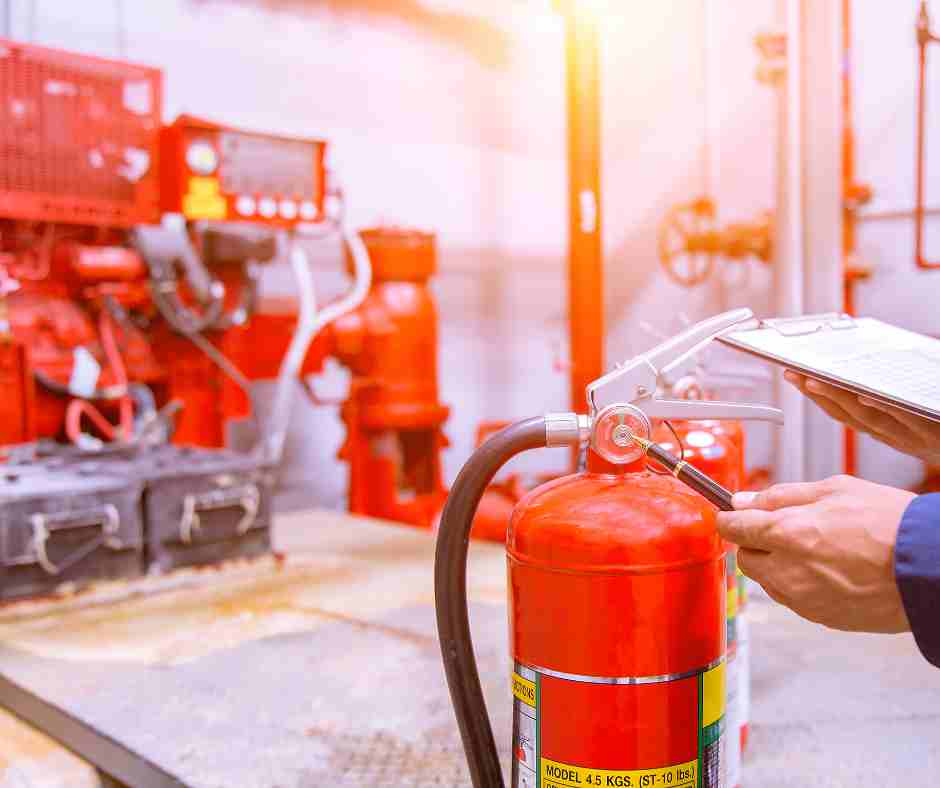A Guide to Fire Safety Engineering
Fire safety engineering is a critical aspect of ensuring the safety of buildings, infrastructure, and people in various environments. It involves the application of engineering principles to prevent, control, and mitigate the effects of fire. Fire safety engineers are tasked with designing systems that reduce the risk of fire, protect people and property in the event of a fire, and ensure compliance with safety regulations. This guide provides a comprehensive overview of fire safety engineering, including key concepts, design principles, and important practices.
Introduction to Fire Safety Engineering
Fire safety engineering is an interdisciplinary field that combines knowledge from various areas of engineering, such as mechanical, electrical, civil, and chemical engineering, with an understanding of fire behavior and safety regulations. The primary goal of fire safety engineering is to protect life and property from the devastating effects of fires by designing effective fire prevention, detection, suppression, and evacuation systems.

Key Roles of Fire Safety Engineers
- Fire prevention: Developing strategies and systems to prevent fires from starting.
- Fire detection: Designing systems that can detect fires in their early stages, such as smoke detectors and heat sensors.
- Fire suppression: Designing systems like sprinklers, fire extinguishers, and deluge systems to control and extinguish fires.
- Evacuation planning: Ensuring that escape routes are effective and safe for occupants in the event of a fire.
- Compliance: Ensuring that fire safety measures meet local and international safety standards and regulations.
Key Principles of Fire Safety Engineering
Fire safety engineering encompasses several critical principles that guide the design and implementation of fire safety measures:
Fire Behavior and Dynamics
Understanding how fires start, spread, and behave is essential for designing effective fire safety systems. Key factors in fire behavior include:
- Ignition sources: Understanding how fires begin, whether from electrical faults, open flames, or chemical reactions.
- Fuel sources: Identifying materials that can fuel a fire, such as wood, plastics, and flammable liquids.
- Heat release: Analyzing the amount of heat generated during combustion and its effects on the surrounding environment.
- Fire spread: Studying how fires spread across surfaces, through ventilation systems, or between buildings.
Fire Risk Assessment
A fire risk assessment involves identifying potential fire hazards, evaluating the likelihood of a fire occurring, and assessing the potential consequences if a fire were to occur. The process typically involves:
- Hazard identification: Recognizing potential fire sources, such as faulty electrical systems or flammable materials.
- Risk evaluation: Determining the probability of a fire occurring and the potential impact on people, property, and the environment.
- Mitigation strategies: Implementing preventive measures, such as fire-resistant materials, firewalls, and fire suppression systems, to minimize the risks.
Fire Safety Design
Fire safety engineers must design systems that can prevent, detect, suppress, and manage fires effectively. These designs should be tailored to the specific needs of the building or environment, considering factors such as occupancy, building use, and local regulations.
Fire Safety Systems
Fire safety systems are the foundation of fire protection in buildings and infrastructure. These systems can be broadly categorized into the following areas:
Fire Detection Systems
Fire detection systems are designed to alert building occupants and emergency responders to the presence of a fire. Common fire detection systems include:
- Smoke detectors: Devices that detect the presence of smoke in the air, often used in residential and commercial buildings.
- Heat detectors: Devices that detect abnormal increases in temperature, commonly used in industrial settings.
- Flame detectors: Sensors that detect the presence of flames, typically used in high-risk areas like chemical plants.
Fire Suppression Systems
Fire suppression systems are designed to control or extinguish fires once they are detected. Common suppression systems include:
- Sprinkler systems: Automatic systems that release water when a fire is detected. Sprinklers are one of the most effective ways to control fire spread.
- Fire extinguishers: Portable devices that allow individuals to put out small fires before they escalate.
- Gaseous suppression systems: Systems that use gases, such as carbon dioxide (CO2) or clean agents, to extinguish fires without causing damage to sensitive equipment.
Fire Containment Systems
Fire containment systems are designed to prevent the spread of fire within a building or between buildings. These systems include:
- Firewalls: Physical barriers that prevent fire from spreading to other areas of a building.
- Fire-resistant doors: Doors that can withstand high temperatures and prevent fire from passing through.
- Smoke control systems: Systems that manage smoke movement within a building, ensuring that escape routes remain clear.
Evacuation Systems
Evacuation systems are designed to ensure that people can safely exit a building in the event of a fire. Key elements of evacuation systems include:
- Escape routes: Clear and accessible paths leading to exits, including stairwells and hallways.
- Emergency lighting: Lighting systems that remain operational during a power failure to illuminate evacuation routes.
- Emergency alarms: Audible or visual signals that alert occupants to evacuate the building immediately.
Fire Safety Engineering Standards and Regulations
Fire safety engineering is governed by a wide range of national and international standards and regulations. These standards are designed to ensure that fire safety systems are effective and reliable. Some key fire safety standards include:
- NFPA (National Fire Protection Association) standards: These standards cover various aspects of fire protection, including fire prevention, detection, and suppression.
- ISO 14001: An international standard for environmental management that includes provisions for fire safety in industrial settings.
- BS 9999: A British standard that provides guidance on the design and management of fire safety in buildings.
Compliance with these standards is essential for ensuring the safety of building occupants and preventing catastrophic fire events.
Fire Safety Engineering in Practice
Fire safety engineers apply their knowledge to a variety of sectors, from residential buildings to industrial plants, ensuring that fire risks are minimized and mitigation systems are in place. Below are some practical applications of fire safety engineering:
Residential Buildings
In residential settings, fire safety engineers design systems to protect families and property. This includes installing smoke detectors, sprinkler systems, and fire-resistant building materials. Engineers also ensure that escape routes are clear and accessible.
Commercial and Industrial Buildings
For commercial and industrial buildings, fire safety engineers focus on more complex systems, such as fire suppression for hazardous materials, chemical plants, and manufacturing facilities. These environments often require specialized fire protection systems to handle high-risk processes.
Transportation and Infrastructure
Fire safety engineering is also crucial in transportation infrastructure, including airports, train stations, and tunnels. Engineers design fire safety systems that can quickly detect and suppress fires while ensuring safe evacuation for passengers.
Challenges in Fire Safety Engineering
Fire safety engineering faces several challenges, particularly as buildings become more complex and new materials and technologies are introduced. Some of the key challenges include:
- Adapting to new building materials: The use of synthetic materials and modern construction techniques can affect the behavior of fires, making it difficult to predict fire spread and risk.
- Designing for high-rise buildings: High-rise buildings present unique challenges for fire safety, including the complexity of evacuation systems and fire suppression.
- Ensuring compliance with evolving regulations: Fire safety regulations are constantly updated to reflect new knowledge and technological advancements, making it essential for engineers to stay up to date.
Book Download
Fire safety engineering plays a vital role in protecting lives and property by designing effective fire prevention, detection, suppression, and evacuation systems. By understanding fire behavior, assessing risks, and implementing comprehensive safety measures, fire safety engineers help create environments where people can work and live safely. As technology and regulations continue to evolve, fire safety engineering will remain a dynamic and essential field, ensuring that communities, businesses, and industries are prepared to manage the risks associated with fire.
 Boilersinfo Boiler and Mechanical Power Digital Library
Boilersinfo Boiler and Mechanical Power Digital Library





